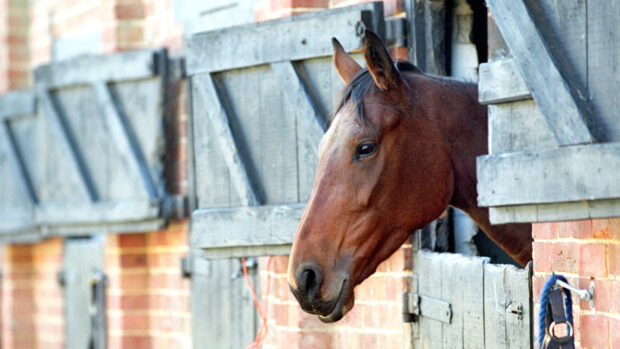Although often unavoidable, it is not natural for horses to be kept in an enclosed space away from their companions. Some horses are more anxious in the stable than others and it is recognised that most stable vices are a response to management problems.
Cribbing and windsucking seem to relate, at least in part, to a diet of concentrates, while weaving, box-walking and head-nodding occur when the horse is frustrated. It is estimated that around 20,000 horses in the UK weave and 10,000 box-walk. It is still not known how many suffer from other forms of separation distress.
Researchers at the University of Lincoln have been investigating ways of improving the housing of horses for several years. Most recently the university undertook a year-long research project into whether mirrors can help reduce separation anxiety. The research has proven that, when used appropriately, many horses can benefit enormously from this simple intervention.
Initial responses to the mirror
Obviously, if the mirror is to work, the horse must show some interest in the reflection and although some may ignore it, most do not.
In trials, the initial response of horses faced with the mirror varied enormously – some approached it and immediately nose-greeted their reflection, while others made a threat towards it at first. The trials found:
- Many horses are cautious when they first see the reflection and may nicker, and for some it can take a couple of weeks to completely accept and benefit from the reflection
- A small minority of horses respond more aggressively to the image and it is not recommended that the mirror be used these cases. The history of these animals usually shows that the horses are naturally unsociable or domineering
- While many owners report an immediate calming influence on their horse, others say the effect is more gradual, taking a month or more to work
- In a small number of cases, the initial comfort provided appears to wear off after a few months
It is important the mirror is positioned in the correct place, so the horse can choose whether to look at its reflection or not. Installing a reflective surface along the whole length of the stable wall is not recommended, as the horse cannot avoid its reflection and may be more stressed as a result.
Similarly, the mirror should not be placed so that the horse sees its reflection close up when feeding – especially on hard feed – as this could encourage aggression and protectiveness around the feed bowl.
The best location for the mirror is just inside the stable door, away from any feeding stations.
Many owners have used the mirror to help reduce stable anxiety, and success has also been reported with horses that suffer from separation anxiety. A typical candidate might be a horse that spends a lot of time in the field, but which becomes agitated when stabled or those which react badly when a close companion is taken away.
A number of owners have also found unexpected secondary effects; for example, one mare that is normally quite noisy when in season was reportedly much calmer once the mirror was installed.
Other owners have observed that their horse’s temperament improved and several owners have said that with the mirror in the stable, their horse is also much easier to tack or rug up. All these reports deserve further investigation.
Several people have used a mirror to help manage a horse on long-term box rest and believe that it helped the horse cope with the confinement. It is also possible that the mirror might reduce the stress of individual box weaning.
The research has found that a mirror is a genuine aid to the management of the stress that can arise when a social animal is restricted from close interaction with others of its kind.



